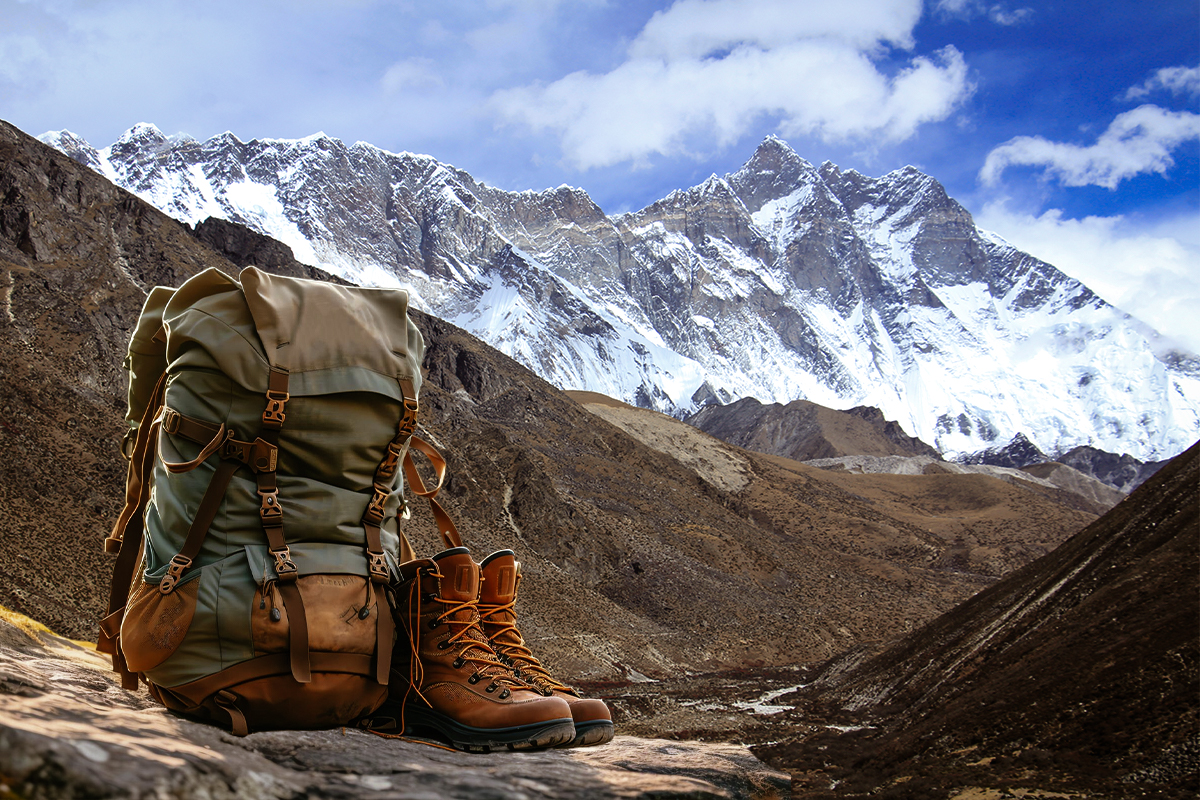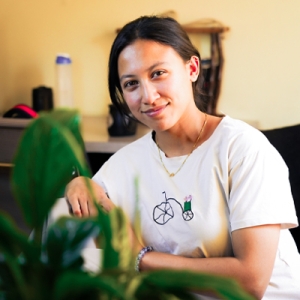What to Pack for the Annapurna Base Camp Trek?
Packing for the Annapurna Base Camp trek is often a headache. With the changing weather, high altitudes, and rugged terrain, figuring out exactly what gear and supplies to bring can be tough. You don't want to overpack but you also don't want to be unprepared. Fortunately, we have created a comprehensive packing list to make things easier for you. This list covers all the essentials like the right trekking clothes, sturdy boots, a quality sleeping bag, trekking gear, a first aid kit, and medications. By referring to this detailed list, you can avoid overpacking unnecessary items and make sure you have everything you'll need for the incredible journey. With some careful packing based on the provided list, you'll be all set for Annapurna.
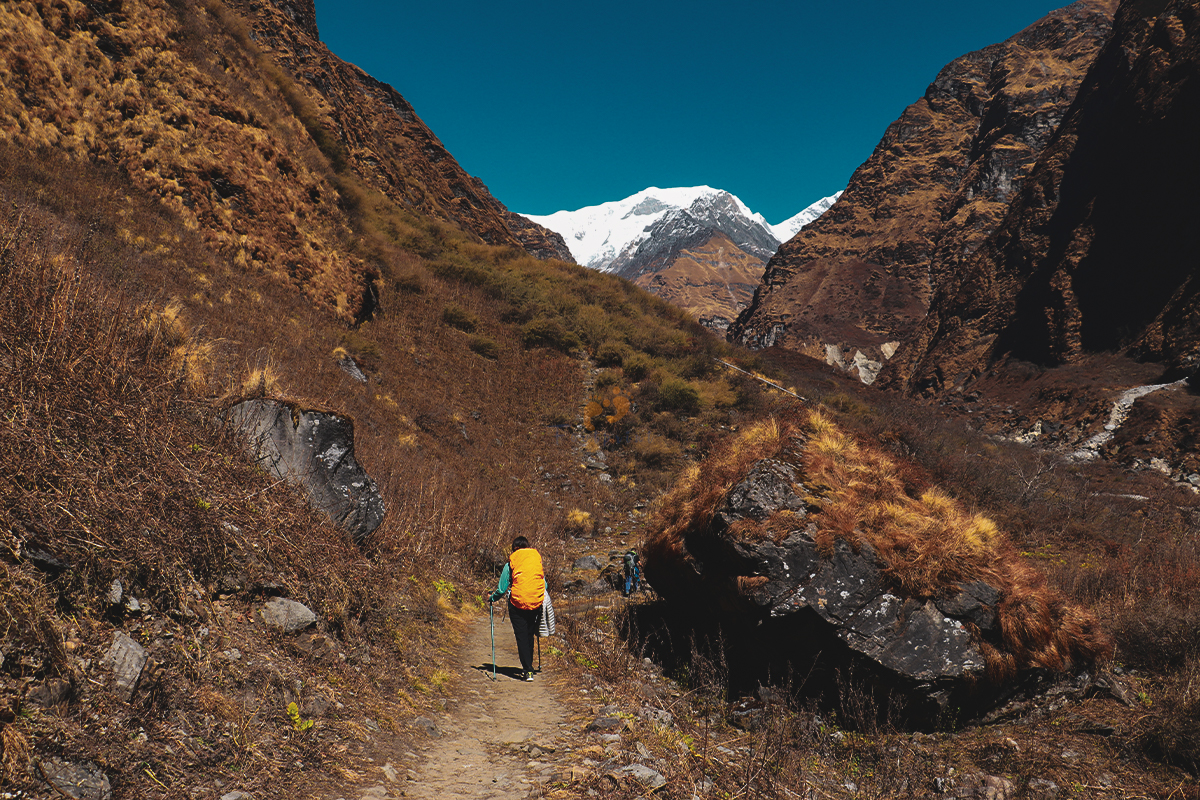
Travel documents and Permits for Annapurna Base Camp
Mandatory Documents:
- Valid Passport (with at least 6 months validity remaining)
- Annapurna Conservation Area Permit (ACAP)
- Trekkers Information Management System (TIMS) Permit
- 4 recent passport-size photographs (2 for TIMS and 2 for ACAP)
- Application form for entry permits
- 2- 3 copies of the passport biodata page
- Proof of Travel Insurance with emergency evacuation coverage
- Confirmed airline tickets and trip itinerary/blueprint

Additional Documents (depending on specific circumstances):
- Proof of COVID-19 vaccination
- Yellow Fever vaccination certificate (if arriving from/transiting through a risk country)
Other Essentials:
- Nepali currency (cash) for permits and trekking expenses
- It is recommended to carry at least $200- $300 in cash
- Credit/Debit cards for emergencies
- Clothing and Layering
Upper Body (Head, Face, and Neck)
- Sun hat or cap - 1
- Scarf or neck gaiter - 1
- Knitted hat - 1
- Sunscreen with SPF 50+ - 1 bottle
- Moisturizer - 1 small bottle
- Chapstick with SPF – 1
- High-quality sunglasses with UV protection - 1 pair
Middle body (Torso)
- 2-3 sports bras (for women)
- Synthetic T-shirts (long sleeve and short sleeve) for wicking moisture - 2/ 3 of each
- Down jacket for warmth during rest stops and cooler temperatures - 1
- Polypropylene or merino wool thermal tops for added insulation, especially at higher elevations - 2
- Wind/Waterproof jacket (Gore-Tex or similar) for protection against wind and precipitation - 1
Hand Protection
- Lightweight glove liners or outdoor gloves for sun protection during the day - 1 pair
- Warm, insulated gloves (fleece or wool) for morning, evening, and higher elevations - 1 pair
Lower Body (Thigh, Legs and feet)
- Hiking Pants- 3-4 pairs
- Hiking Shorts for lower elevation – 1 pair
- Base Layer Bottoms: Synthetic or merino wool moisture-wicking long underwear or tights - 1-2 pairs
- Waterproof Pants/Rain Pants - 1 pair
- Insulated and Windproof Pants: Overtrousers for added warmth during cold, windy, or high-altitude sections - 1 pair (optional)

Footwear
- Trekking Shoes/Boots: Waterproof with good ankle support - 1 pair
- Sandals or Camp Shoes: For comfort at the camp - 1 pair
- Hiking Socks: Moisture wicking and thermal – 4-5 pairs
- Knee/Ankle Braces (Optional): If needed for extra support
- Gaiters (Optional): For protection against mud and debris
First Aid and Medicine
At Footprint Adventures, we prioritize the safety and well-being of our valued guests during any adventure trip. Our experienced guides carry a comprehensive first-aid kit with all the necessary medicines to handle any minor medical situations that may arise throughout the trek. However, we recommend you also come prepared with any personal medications or remedies. While our guides are equipped to provide initial care, having your supply of essential medicines can give you added peace of mind and ensure you're fully prepared for the demanding nature of the trek. To help you prepare, we have included a list of recommended medications and first-aid supplies you should consider bringing.
Medications:
- Diamox / acetazolamide (for prevention and treatment of altitude sickness)
- Painkillers (e.g. paracetamol)
- Antiinflammatory drugs (e.g., diclofenac)
- Antacids (e.g., Eno, Digene)
- Antihistamines (for allergic reactions)
- Oral rehydration salts
- Antinausea medication (e.g., Ondansetron)
- Personal prescription medications (if any)
First Aid:
- Adhesive bandages (assorted sizes)
- Gauze pads
- Antiseptic creams/ointments
- Blister treatment supplies (e.g., moleskin, second skin)
- Scissors
- Safety pins
- Tweezers
- Thermometer
- Elastic bandage
- Antibiotic ointment
- Pulse oximeter (to monitor blood oxygen levels, especially important at high altitudes)
Remember, it is always best to consult your doctor or a travel health professional for personalized medication advice and first aid kit contents based on your health conditions.
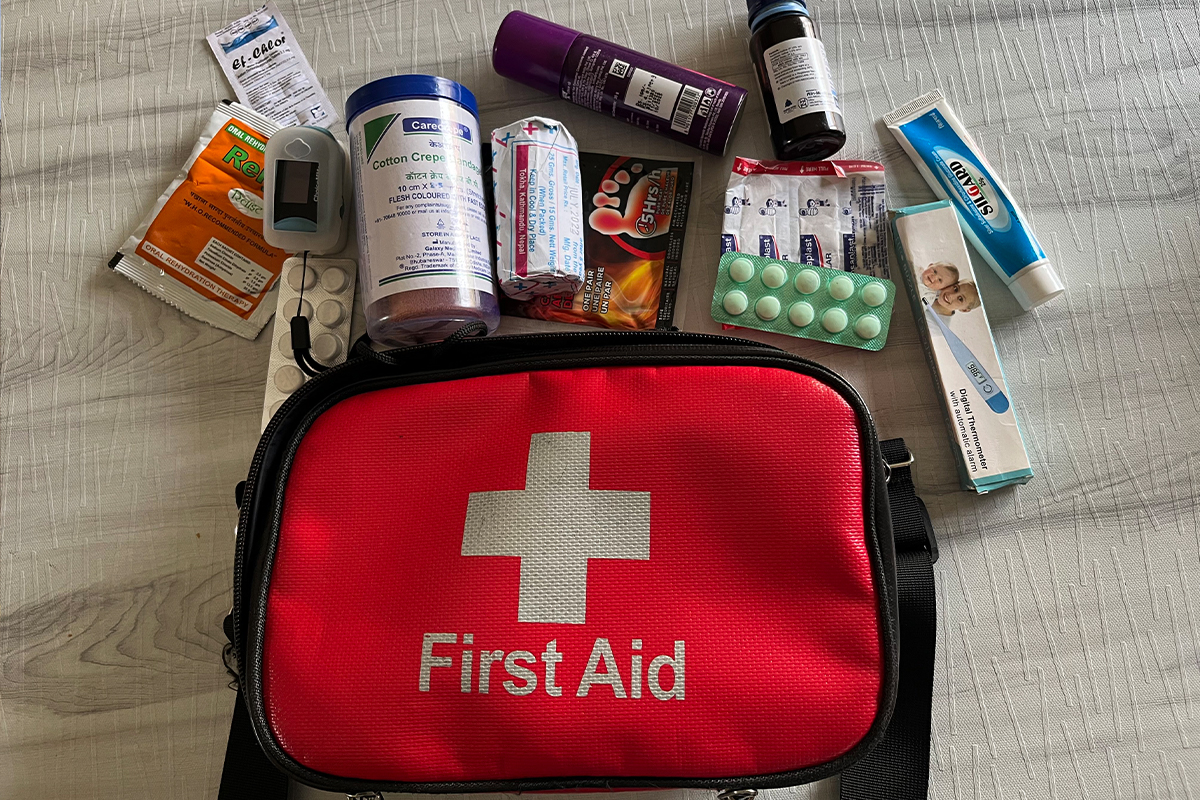
Bag Pack and Packing Strategies
Baggage:
- Duffle Bag (90-100 liters):
- If hiring porters, a large duffle bag will be provided by our company/office to store the bulk of your gear.
- The provided duffle bag is usually lockable to secure your belongings during the trek.
- You can leave any extra items that you don't need on the trek at your hotel.

Trekking Backpack (35-55 liters):
- A comfortable, lightweight backpack within this size range is ideal for carrying your essentials without hiring a porter.
- Test pack your backpack at home to ensure all your gear fits properly.
- Day Backpack (20 liters):
If hiring a porter, carry a smaller day backpack for essentials like water, snacks, a first-aid kit, and extra layers.
Backpacking Strategy
- Accessibility (A): Pack frequently used items like sunscreen, camera, snacks, and water bottles in easily accessible pockets or the top compartment of your backpack. This way, you won't have to dig through your bag whenever you need these essentials during the trek.
- Balanced (B): Distribute the weight evenly in your backpack by packing heavier items closer to your back and lighter items towards the outer compartments. Maintain a balanced center of gravity for comfortable carrying. Proper weight distribution will prevent strain and make the backpack easier to manage on the trail.
- Compressed (C): Use compression sacks to compress clothing and gear, maximizing space in your backpack. Roll or fold items tightly to eliminate excess air pockets. Compressing your items allows you to fit more into your bag without increasing weight.
- Dry (D): Pack wet and dry items separately using dry bags or waterproof stuff sacks. Consider lining the inside of your backpack with a trash bag or pack cover for added waterproofing. Keeping your gear dry is crucial for comfort and safety on the trek.
- Everything Inside (E): Avoid attaching any loose items to the outside of your backpack, as they can get tangled or lost. Pack all your belongings inside the bag or secure pockets. Everything in the backpack prevents items from getting snagged or falling off.
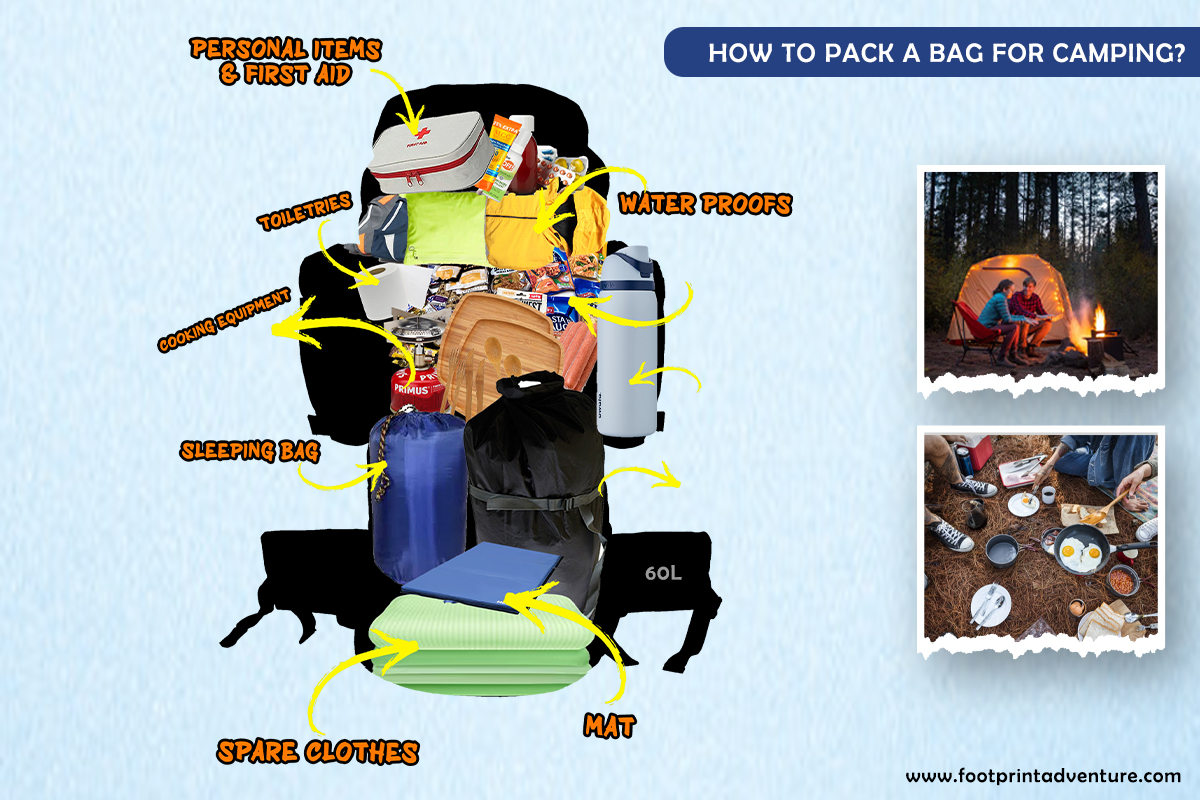
Additional Tips:
- Pack your sleeping bag at the bottom of your backpack, as they are bulky but relatively lightweight.
- Use separate stuff sacks or dry bags for dirty clothes, clean clothes, and any damp items to keep everything organized and dry.
- Pack essential items like a first-aid kit, navigation tools (map, compass, or GPS), emergency blanket, and multi-tool in an easily accessible location.
- Consider carrying a lighter or fire-starting kit and a whistle and signaling mirror for emergencies.
- Practice packing and wearing your fully loaded backpack before the trek to ensure a comfortable fit and make any necessary adjustments.
- Be prepared to adjust the packing and weight distribution as needed during the trek, based on your comfort level and changing conditions.

Toiletries
- Toilet Paper
- Toothpaste
- Toothbrush
- Shampoo
- Soap
- Wet Tissues
- Sanitary pads
- Towel
Miscellaneous items
- Headlamp
- Trekking poles
- Universal adapter
- Power bank
- Rain gear
- Trekking maps and guidebooks
- Camera
- 1-liter water bottle
- 1-liter thermos
- Protein bars and chocolates
- Compass or GPS device
- Eye drops
- Earplugs
- Shaving Cream/ gel
- Razor
Hydration and water treatment guide for water purification
Proper hydration is essential for a safe and enjoyable experience during any trek. The strenuous nature of trekking at varying altitudes, combined with temperature changes and physical exertion, can lead to excessive fluid loss through sweating. Staying well-hydrated helps prevent dehydration-related issues like fatigue, headaches, muscle cramps, and altitude sickness. It also aids in maintaining energy levels, improving physical performance, and supporting recovery after each trekking day.
To ensure optimal hydration during the ABC Trek, take the following precautions and carry the necessary items:
- Refillable water bottle: Carry a durable and leakproof water bottle to have easy access to drinking water throughout the trek.
- Electrolyte-rich beverages or snacks: Replenish minerals lost through sweat by including electrolyte-rich drinks or snacks in your trekking supplies.
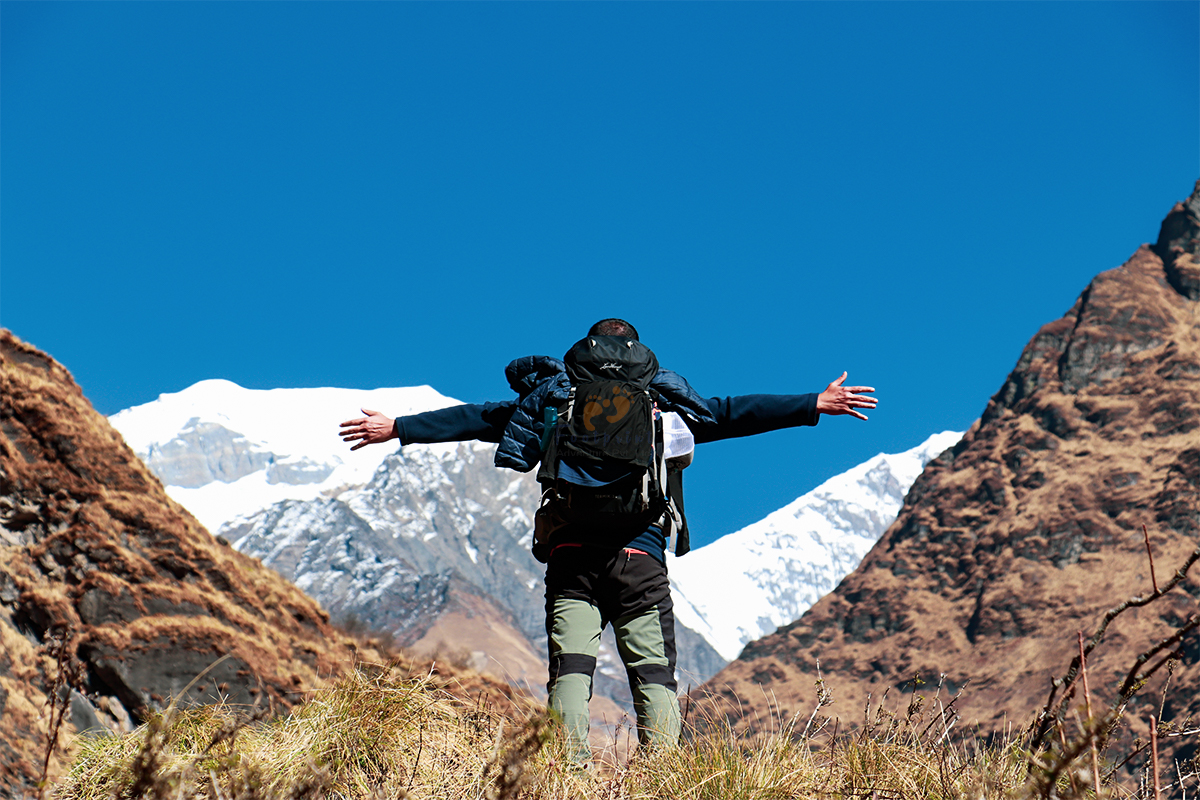
Water purification methods: Carry a combination of water purification methods to ensure a safe supply of drinking water from various sources along the trek. Options include:
- Water purification tablets (e.g., Aquatabs, Potable Aqua)
- Liquid purification drops (e.g., Aquamira, Katadyn)
- Portable water filters (e.g., Sawyer Mini, Lifestraw, Katadyn BeFree)
- UV water purifiers (e.g., SteriPEN, Camelbak All Clear UV)
- Steripen (handheld UV purifier)
Stay mindful of drinking water regularly, even before feeling thirsty, to maintain proper hydration levels throughout the Trek.
What to pack in a Day bag for Annapurna Base Camp Trek?
- Water Bottle or Hydration Reservoir
- High-Energy Snacks (energy bars, trail mix, dried fruits)
- Lightweight Rain Jacket or Poncho
- Warm Layer (fleece jacket or insulated jacket)
- Sun Protection (hat, sunglasses, sunscreen)
- Navigation Tools (map, compass, or GPS device)
- First-Aid Kit (bandages, blister treatment, medications)
- Headlamp or Flashlight
- Toilet Paper or Wet Wipes
- Trekking Poles (optional, but recommended)
- Camera (optional)
- Personal Medications (if applicable)
- Insect Repellent
- Lip Balm
- Small Towel or Handkerchief
- Extra Pair of Socks
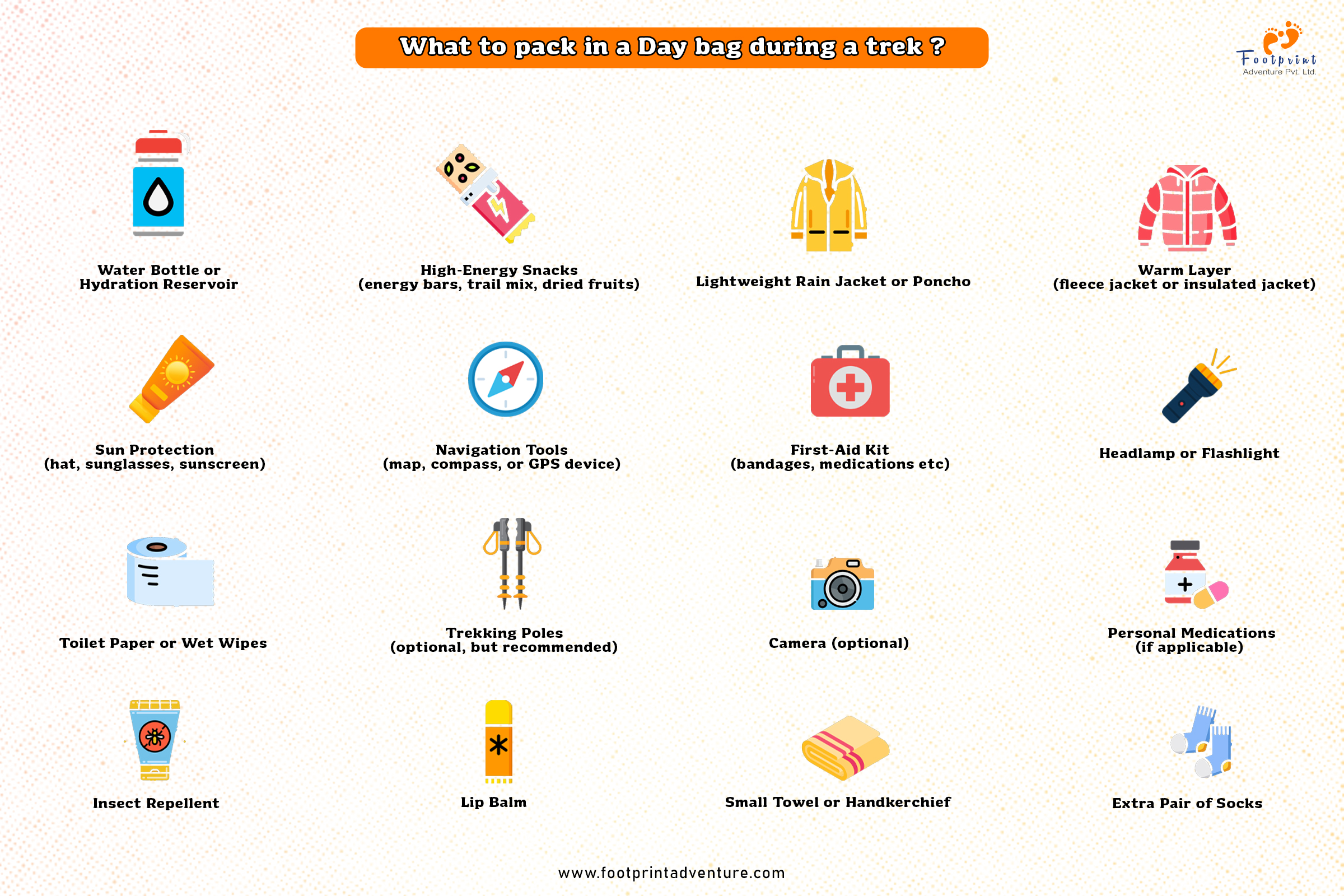
Seasonal Packing Guide: When Are You Trekking?
The Annapurna Base Camp (ABC) trek is doable year-round, but each season presents its own set of challenges and requirements. To make your trek enjoyable, you need to pack according to the season you’re trekking in. Here's a breakdown of what to expect and how to prepare for each season:
Spring (March – May): Pleasant Days, Crisp Nights
Spring is one of the most popular times for trekking in the Annapurna region. The weather is mild, with warm daytime temperatures and cold but manageable nights. The trails are lined with blooming rhododendrons, making the trek even more scenic.
What to Pack:
- Lightweight but warm layers (mornings and evenings are chilly)
- A light rain jacket – Occasional rain showers are common
- Sunglasses & Sunscreen – The sun can be quite strong at higher altitudes
- Comfortable trekking pants & breathable shirts – Quick-drying fabrics are best
- A buff or scarf – Useful for protecting against dust on the trails
Pro tip: Spring can bring unpredictable weather at higher altitudes. Be prepared for sudden temperature drops at night.
Monsoon (June – August): Wet, Humid, and Lush
The trekkers encounter heavy rainfall and landslides together with leeches that create obstacles during monsoon season. Visitors will find an exceptionally verdant terrain during that time since there are fewer people exploring the area. Trekking in this season demands you to tolerate moisture along with trail hazards because it presents a different type of adventure.
What to Pack:
- Waterproof everything – Rain jacket, rain pants, and a waterproof backpack cover
- Quick-dry clothing – Cotton stays wet, so opt for synthetic materials
- Gaiters & Waterproof Boots – Protect against muddy, leech-infested trails
- Trekking Poles – Essential for stability on slippery paths
- Mosquito/Leech Repellent – A must-have for this season
- Extra pairs of socks – Your feet will thank you!
Pro tip: Since rain can cause landslides in some areas, always check the latest trail conditions before heading out.
Autumn (September – November): Best Weather, but Crowded
Autumn is the best season for trekking in Nepal, with stable weather, clear skies, and breathtaking mountain views. However, because of these ideal conditions, it is also the busiest season. Expect crowded tea houses and full trekking trails.
What to Pack:
- Layered clothing – Days are warm, but nights get cold
- Good quality trekking boots – Trails can be rocky and uneven
- A headlamp – Useful for early morning hikes to viewpoints
- Hat & Gloves – Nighttime temperatures can be freezing at higher altitudes
- A power bank or solar charger – Charging stations in tea houses get crowded
Pro tip: Book accommodations in advance or start your trek early in the day to secure a good spot at tea houses.
Winter (December – February): Freezing Cold & Fewer Crowds
Winter trekking is for the adventurous! The trails are much quieter, but the cold is intense, especially at higher altitudes. Expect snow-covered paths, icy conditions, and fewer open tea houses. For more read our blog, best time for Annapurna Base Camp trek.
What to Pack:
- Heavy-duty winter gear – A thick down jacket, fleece layers, and thermal wear
- Waterproof & insulated trekking boots – Essential for walking on snow and ice
- Crampons/microspikes – Helpful for navigating icy sections
- Extra pairs of warm socks & gloves – Prevent frostbite and keep extremities warm
- A four-season sleeping bag (-10°C to -15°C comfort range) – Tea house blankets won’t be enough!
- Lip balm & moisturizer – Cold air can be harsh on the skin
Pro tip: Days are short in winter, so start trekking early to reach your destination before dark.
Eco-Friendly Trekking: Leave No Trace
Friendly foot traffic has increased in the stunning Annapurna region so it becomes crucial to maintain the natural beauty of the region. The practice of responsible trekking demands we observe sustainable practices to reduce our environmental effects.
1. Use Reusable Bottles & Water Filters
Nepal has a major plastic waste problem, especially in trekking areas. Instead of buying single-use plastic water bottles, carry a reusable bottle and a water purification method such as:
- Water purification tablets (Aquamira, Katadyn, etc.)
- A Steripen (UV water purifier)
- A portable water filter (LifeStraw, Sawyer Squeeze, etc.)
Pro tip: Many tea houses provide boiled water for a small fee—just bring a bottle that can handle hot water!
2. Pack Out Your Trash
Tea houses and villages have limited waste management facilities. That means any plastic or non-biodegradable waste you generate stays in the mountains unless you carry it out.
- Avoid single-use plastics – Say no to plastic wrappers, bags, and bottles
- Bring a reusable shopping bag – Handy for carrying snacks and supplies
- Carry a small trash bag – Store your own waste until you find a proper disposal site
Pro tip: If you bring packaged snacks, take the wrappers back with you instead of leaving them in tea houses.
3. Respect Local Culture & Communities
The Annapurna region is home to diverse ethnic communities, including the Gurung and Magar people. It’s important to be mindful and respectful of their customs and traditions.
- Dress modestly – Avoid wearing revealing clothing, especially in villages
- Ask before taking photos – Not everyone is comfortable being photographed
- Support local businesses – Buy food and supplies from local shops instead of bringing everything from the city
- Learn a few local phrases – A simple "Namaste" (hello) goes a long way!
Pro tip: If you want to give back, consider donating to local schools or environmental initiatives rather than handing out money or gifts directly to children.
By preparing well for the season and trekking responsibly, you can enjoy a safe, comfortable, and eco-friendly adventure in the Annapurna region. Whether you're trekking under blooming rhododendrons in spring, through monsoon mists, in the crisp autumn air, or across snowy winter landscapes, the key is to pack smart, stay prepared, and respect the environment.
Conclusion
In conclusion, the Annapurna Base Camp trek, starting from the picturized city of Pokhara is a remarkable journey that offers breathtaking mountain scenery, diverse landscapes, and a chance to immerse yourself in the rich Himalayan culture. While it presents a rewarding challenge with its high altitude and rugged terrain, proper preparation and packing the right gear can ensure a safe and enjoyable experience. By following a comprehensive packing list and strategies, you can equip yourself with the necessary clothing, footwear, trekking accessories, and supplies to tackle the varying conditions along the trail. Additionally, staying hydrated and carrying water purification methods are crucial for maintaining your health and energy levels throughout the trek. With the right preparation and mindset, the Annapurna Base Camp trek can be an unforgettable adventure that rewards you with stunning natural beauty and a sense of personal accomplishment.
Tips for trekking to Annapurna Base Camp Trek
FAQs
What is the best time to trek to Annapurna Base Camp?
- Spring (March to May): This is one of the best times to trek as the weather is generally stable, and the rhododendron forests are in full bloom.
- Autumn (September to November): Another ideal time with clear skies, pleasant temperatures, and great visibility of the mountains.
Do I need a permit to trek to Annapurna Base Camp?
- Annapurna Conservation Area Permit (ACAP)
- Trekkers' Information Management System (TIMS) card
What is the duration of the ABC trek?
The Annapurna Base Camp trek takes 15 days starting from Kathmandu. However, the actual trek takes about 10-12 days, depending upon your itinerary.
Can I charge my electronics on the ABC trek?
Yes, but charging facilities may be limited and often require a fee. It’s advisable to bring extra batteries or a solar charge.
What should I pack in my daypack?
Essentials like water, snacks, a first aid kit, a rain jacket, a camera, and personal identification.
Is it necessary to hire a guide or porter?
As of April 2023, the Nepal government has mandated that hiring a guide is compulsory to ensure the safety of tourists on the trails. Although the trail is well-marked, hiring a guide can enhance your experience by providing local knowledge and ensuring safety. Additionally, a porter can help carry your load, allowing you to enjoy the trek more comfortably.
What should I wear to Annapurna Base Camp?
Wear layered clothing to adapt to changing temperatures. Pack moisture-wicking base layers, an insulating fleece or down jacket, and a waterproof outer shell. Quick-dry trekking pants, warm socks, a hat, gloves, and a buff are essential for protection against the elements. Sturdy, waterproof trekking boots are a must for rough terrain.
How do I prepare for Annapurna Base Camp?
Start physical training at least 6-8 weeks before the trek, focusing on cardio, leg strength, and endurance. Acclimatize properly by ascending gradually and staying hydrated. Pack wisely with weather-appropriate gear and ensure you have permits like the Annapurna Conservation Area Permit (ACAP) and TIMS Card. Hiring a guide or porter can enhance safety and convenience.
What to pack for Annapurna Trek?
Pack lightweight but essential items, including layered clothing, a waterproof jacket, a sleeping bag rated for -10°C to -15°C, trekking poles, a headlamp, and a water purification system. Bring personal hygiene items, sunscreen, energy snacks, and a first aid kit. A 50-65L backpack is recommended if carrying your own gear, while a 20-30L daypack is enough if hiring a porter.
What size backpack for Annapurna Base Camp?
If carrying all your gear, a 50-65L backpack is ideal. If hiring a porter, a 20-30L daypack is sufficient for daily essentials like water, snacks, and rain gear. Ensure your backpack has a rain cover and a comfortable fit to avoid strain during long hikes.
